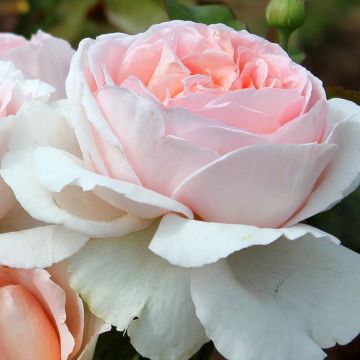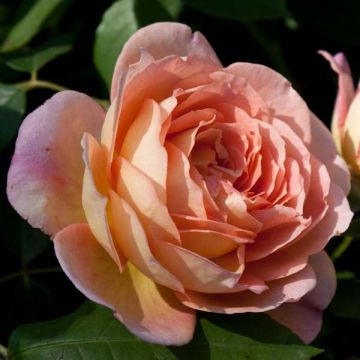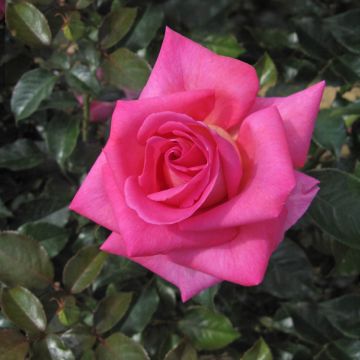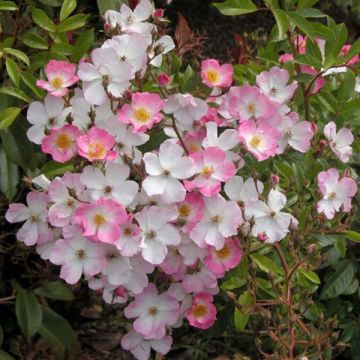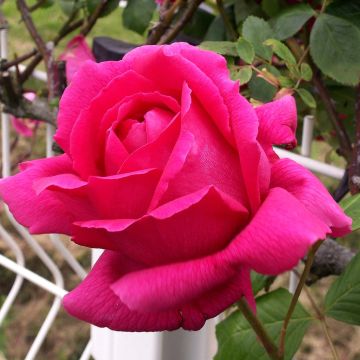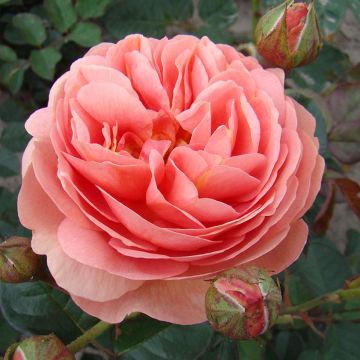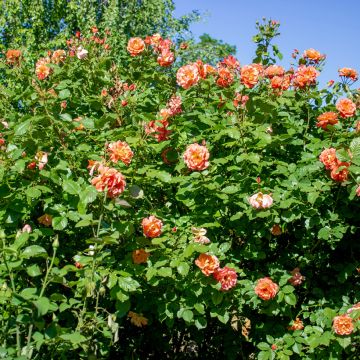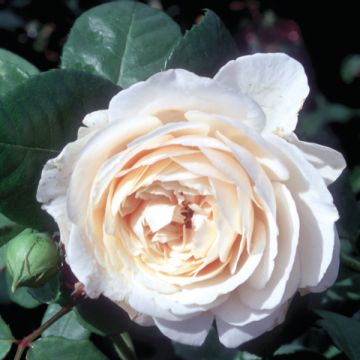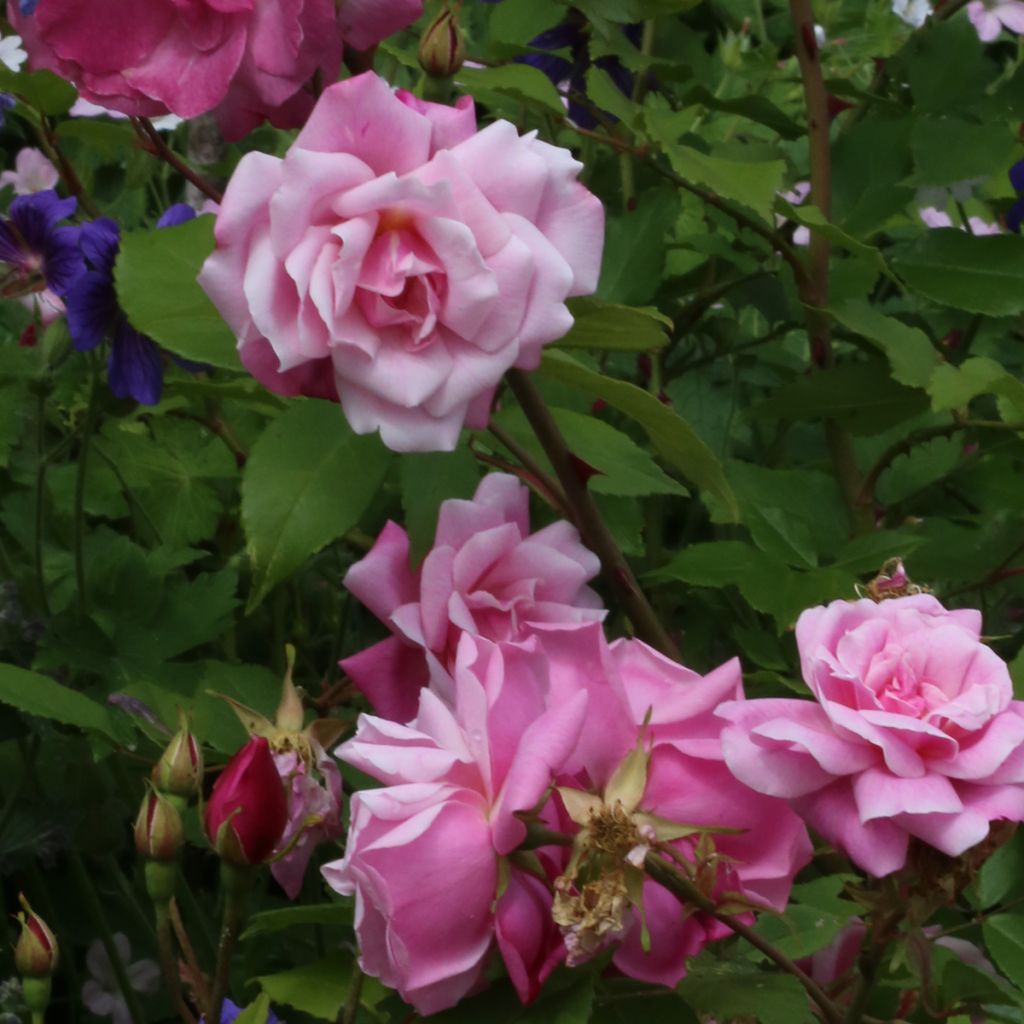

Rosa chinensis Old Blush - China Rose
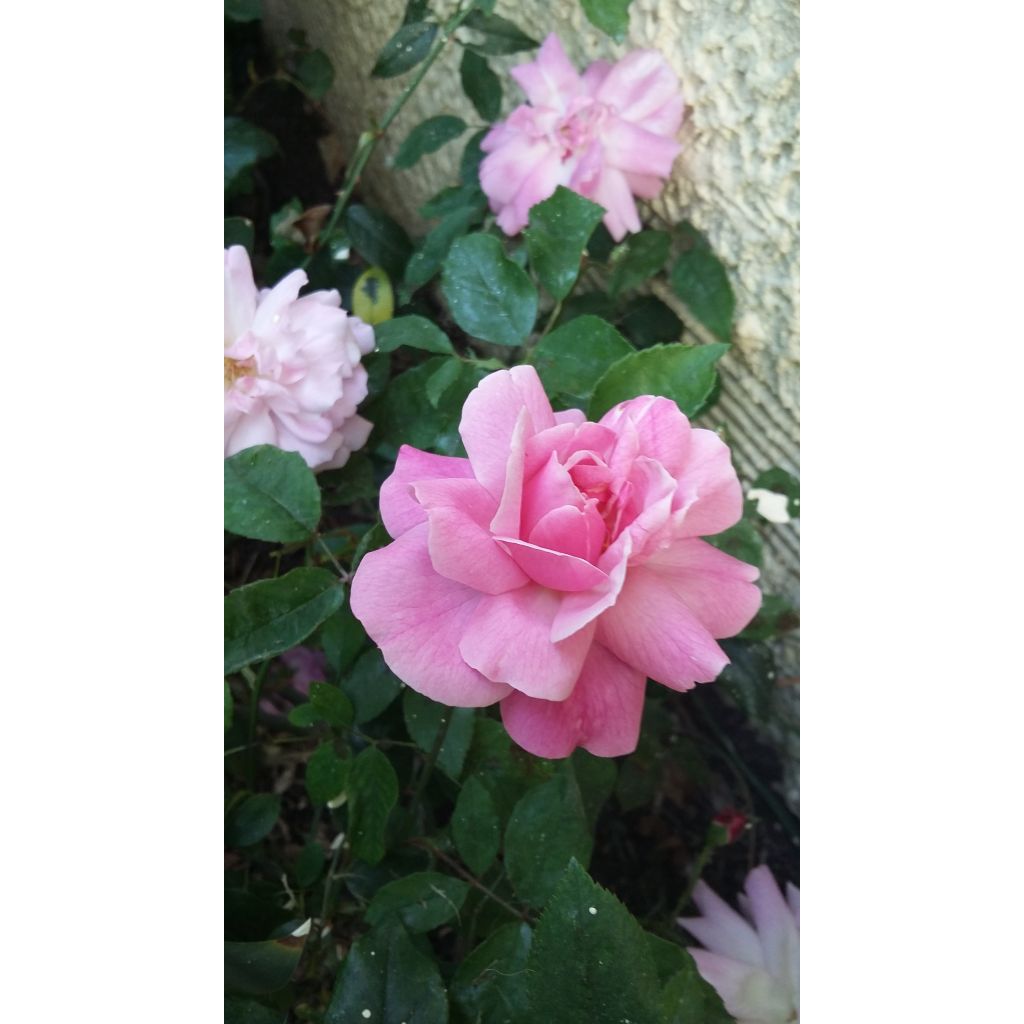

Rosa chinensis Old Blush - China Rose
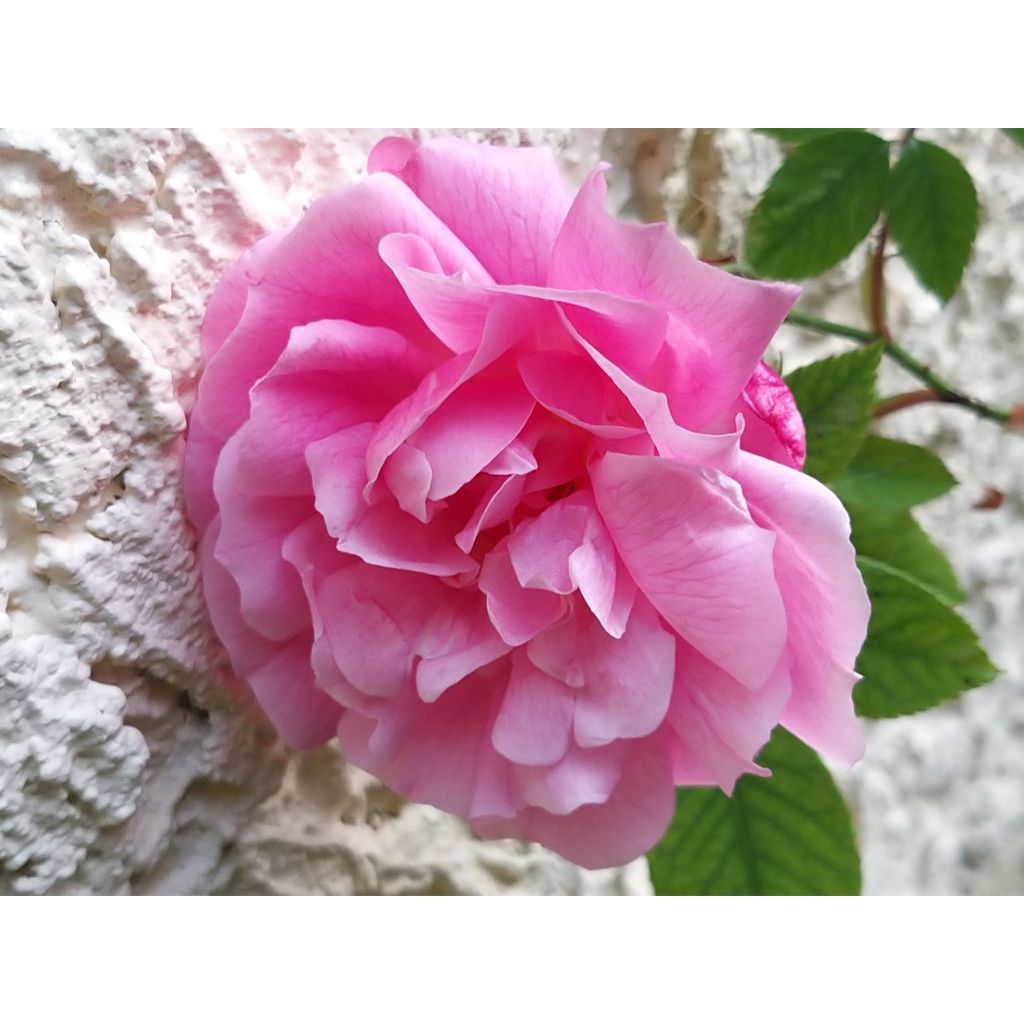

Rosa chinensis Old Blush - China Rose
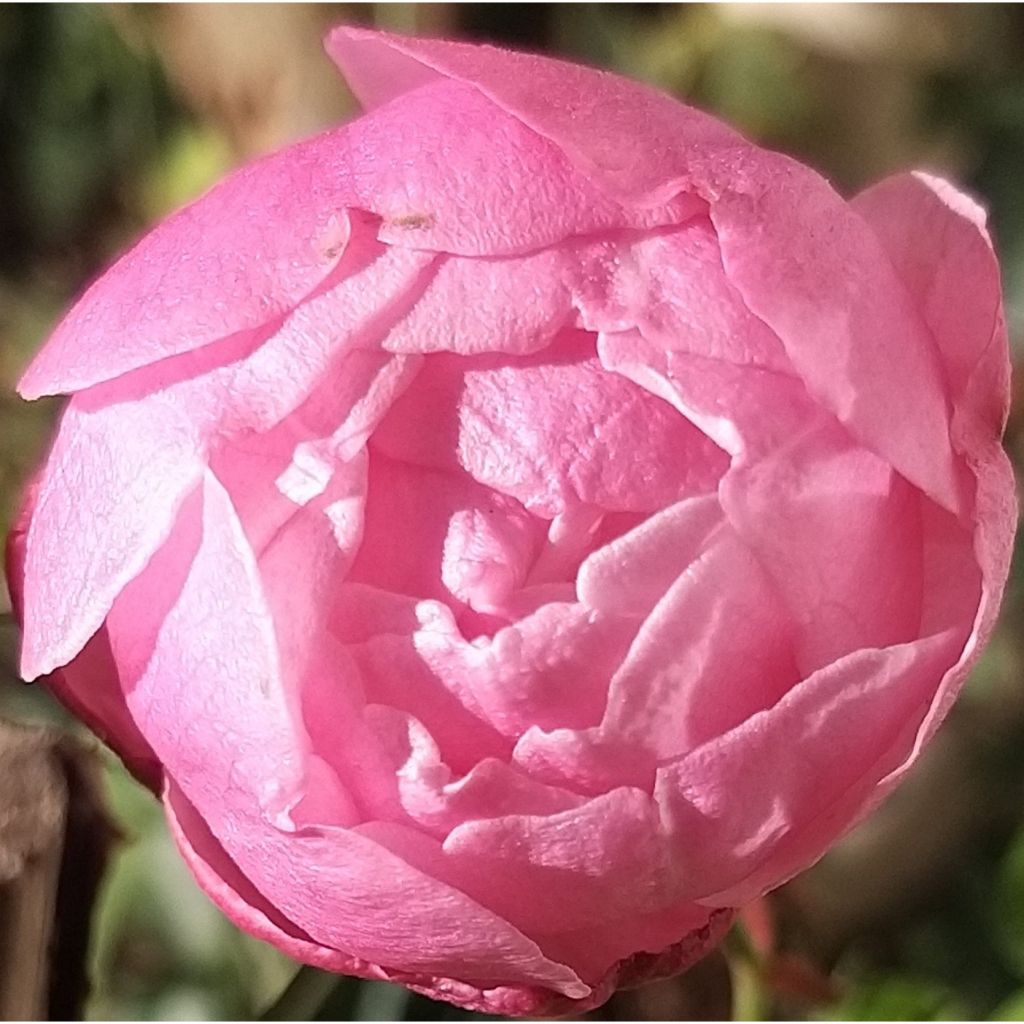

Rosa chinensis Old Blush - China Rose
Rosa chinensis Old Blush - China Rose
Rosa x chinensis Old Blush (Pink China, Persons)
China Rose, Chinese Rose
Received this bare-root plant, well packaged and fresh. The branches are a bit delicate, so I decided to plant it in a pot for a season or two, to allow it to grow a bit more and to enjoy its long flowering and sweet fragrance on my terrace. Can't wait to see how it responds.
PATRICIA, le 18 mars 2024, 18/03/2024
This item cannot be shipped to the selected country
Delivery charge from €5.90
Delivery charge from €5.90
Delivery to Corse prohibited
More information
Schedule delivery date,
and select date in basket
This plant carries a 24 months recovery warranty
More information
We guarantee the quality of our plants for a full growing cycle, and will replace at our expense any plant that fails to recover under normal climatic and planting conditions.
From €5.90 for pickup delivery and €6.90 for home delivery
Express home delivery from €8.90.
From €5.90 for pickup delivery and €6.90 for home delivery
Express home delivery from €8.90.
Delivery to Corse prohibited: UE law prohibits the import of this plant from mainland France to Corse as part of the fight against Xylella fastidiosa. Please accept our sincere apologies.
More information

Does this plant fit my garden?
Set up your Plantfit profile →
Description
The 'Old Blush' Rose is one of the first roses to have arrived in Europe from the Far East. Although not a botanical species, this rose, cultivated in Chinese gardens for over 1000 years, is very close to the wild rose R. chinensis var. spontanea. This well-stabilized horticultural variety has been enthusiastically praised in the West for centuries. Remarkably floriferous, this slender little bush tirelessly produces semi-double, airy flowers that darken to a very pale pink over time. This mythical rose retains all its charm in our eyes, especially when the climate allows it to bloom all year round, even in the heart of winter.
Rosa chinensis 'Old Blush', also known as Rosa 'Parsons Pink' or Rosa 'China Pink', is an ancient variety, probably a dwarf, perpetual natural mutation of the climbing wild Chinese rose, with single flowering and evergreen foliage. 'Old Blush' forms a slender, branched bush with a habit barely taller than wide, reaching approximately 1.2 metres (3 feet 11 inches) in height and 1 metre (3 feet 4 inches) in spread. Its young, sparsely thorny branches are initially purple, then turn green before lignifying. Its evergreen foliage, under mild climates, is divided into 3 to 5 entire leaflets, and is typical of the Chinese rose, initially purple and then light green in summer. The flowering is almost continuous, remarkably abundant in April-May depending on the climate, renewing itself in successive waves thanks to the rain. In mild climates, this rose still bears flowers at Christmas. The flowers, gathered in small clusters or solitary, are adorable semi-double roses, a bit tousled, with a tender pink colour turning into a deep pink. They measure approximately 6cm (2.4in) in diameter and are lightly scented. This variety, not very demanding in terms of soil, thrives on its own roots.
If the passion for botanical roses and their direct hybrids is not widespread, it is fully justified, especially in difficult soils : these roses are not only the parents of our modern roses, but they are also generally more robust and reliable. The 'Old Blush' rose is a fantastic rose that has given rise to countless modern tea hybrids. While its hardiness is sometimes lacking in the north (-12°C (10.4 °F)), it deserves to be honoured by being planted in a romantic bed or a small country hedge, alongside Rosa complicata or Rosa (x) chinensis 'Mutabilis', a multicoloured harlequin. It looks beautiful in front of a mass of tall asters (Aster laevis, Aster turbinellus, Kalimeris mongolica, Solidaster), free in a wild garden, or surrounded by warm tones like the autumn foliage of Cotinus and deciduous Euonymus. In spring, the fragrance and roundness of lilacs, the purity of mock oranges will accompany its youthful appearance, while in summer, the Ceanothus and shrubby Potentillas will take over. Finally, it is a very healthy, low maintenance shrub, and once well established, it is resistant to drought.
Report an error about the product description
Rosa chinensis Old Blush - China Rose in pictures


Plant habit
Flowering
Foliage
Botanical data
Rosa
x chinensis
Old Blush (Pink China, Persons)
Rosaceae
China Rose, Chinese Rose
Cultivar or hybrid
Rosa canina Laxa (Wrapped bare root)
Other Roses A to Z
Planting and care
The 'Old Blush' rose, like all chinensis cultivars, is not very demanding on the nature of the soil, as long as it is properly drained. It is hardy up to about -12°C/-15°C (5 °F). It tolerates limestone and poor soils well, but dreads suffocating soils. It thrives in sufficiently sunny regions, fears neither diseases nor drought once well established. It adapts to all gardens, as long as the planting is taken care of! Plant it in well-worked and properly drained ordinary soil, and in a sunny or partially shaded, even shady, exposure, which it tolerates very well in hot climates. It may be useful to remove dead wood in winter.
Roses are often stained or ugly at the end of summer, but this is not a problem for their development. These stains are not dangerous for the rose, it is a natural phenomenon.
Planting period
Intended location
Care
-
, onOrder confirmed
Reply from on Promesse de fleurs
Traditional Roses
Haven't found what you were looking for?
Hardiness is the lowest winter temperature a plant can endure without suffering serious damage or even dying. However, hardiness is affected by location (a sheltered area, such as a patio), protection (winter cover) and soil type (hardiness is improved by well-drained soil).

Photo Sharing Terms & Conditions
In order to encourage gardeners to interact and share their experiences, Promesse de fleurs offers various media enabling content to be uploaded onto its Site - in particular via the ‘Photo sharing’ module.
The User agrees to refrain from:
- Posting any content that is illegal, prejudicial, insulting, racist, inciteful to hatred, revisionist, contrary to public decency, that infringes on privacy or on the privacy rights of third parties, in particular the publicity rights of persons and goods, intellectual property rights, or the right to privacy.
- Submitting content on behalf of a third party;
- Impersonate the identity of a third party and/or publish any personal information about a third party;
In general, the User undertakes to refrain from any unethical behaviour.
All Content (in particular text, comments, files, images, photos, videos, creative works, etc.), which may be subject to property or intellectual property rights, image or other private rights, shall remain the property of the User, subject to the limited rights granted by the terms of the licence granted by Promesse de fleurs as stated below. Users are at liberty to publish or not to publish such Content on the Site, notably via the ‘Photo Sharing’ facility, and accept that this Content shall be made public and freely accessible, notably on the Internet.
Users further acknowledge, undertake to have ,and guarantee that they hold all necessary rights and permissions to publish such material on the Site, in particular with regard to the legislation in force pertaining to any privacy, property, intellectual property, image, or contractual rights, or rights of any other nature. By publishing such Content on the Site, Users acknowledge accepting full liability as publishers of the Content within the meaning of the law, and grant Promesse de fleurs, free of charge, an inclusive, worldwide licence for the said Content for the entire duration of its publication, including all reproduction, representation, up/downloading, displaying, performing, transmission, and storage rights.
Users also grant permission for their name to be linked to the Content and accept that this link may not always be made available.
By engaging in posting material, Users consent to their Content becoming automatically accessible on the Internet, in particular on other sites and/or blogs and/or web pages of the Promesse de fleurs site, including in particular social pages and the Promesse de fleurs catalogue.
Users may secure the removal of entrusted content free of charge by issuing a simple request via our contact form.
The flowering period indicated on our website applies to countries and regions located in USDA zone 8 (France, the United Kingdom, Ireland, the Netherlands, etc.)
It will vary according to where you live:
- In zones 9 to 10 (Italy, Spain, Greece, etc.), flowering will occur about 2 to 4 weeks earlier.
- In zones 6 to 7 (Germany, Poland, Slovenia, and lower mountainous regions), flowering will be delayed by 2 to 3 weeks.
- In zone 5 (Central Europe, Scandinavia), blooming will be delayed by 3 to 5 weeks.
In temperate climates, pruning of spring-flowering shrubs (forsythia, spireas, etc.) should be done just after flowering.
Pruning of summer-flowering shrubs (Indian Lilac, Perovskia, etc.) can be done in winter or spring.
In cold regions as well as with frost-sensitive plants, avoid pruning too early when severe frosts may still occur.
The planting period indicated on our website applies to countries and regions located in USDA zone 8 (France, United Kingdom, Ireland, Netherlands).
It will vary according to where you live:
- In Mediterranean zones (Marseille, Madrid, Milan, etc.), autumn and winter are the best planting periods.
- In continental zones (Strasbourg, Munich, Vienna, etc.), delay planting by 2 to 3 weeks in spring and bring it forward by 2 to 4 weeks in autumn.
- In mountainous regions (the Alps, Pyrenees, Carpathians, etc.), it is best to plant in late spring (May-June) or late summer (August-September).
The harvesting period indicated on our website applies to countries and regions in USDA zone 8 (France, England, Ireland, the Netherlands).
In colder areas (Scandinavia, Poland, Austria...) fruit and vegetable harvests are likely to be delayed by 3-4 weeks.
In warmer areas (Italy, Spain, Greece, etc.), harvesting will probably take place earlier, depending on weather conditions.
The sowing periods indicated on our website apply to countries and regions within USDA Zone 8 (France, UK, Ireland, Netherlands).
In colder areas (Scandinavia, Poland, Austria...), delay any outdoor sowing by 3-4 weeks, or sow under glass.
In warmer climes (Italy, Spain, Greece, etc.), bring outdoor sowing forward by a few weeks.




































